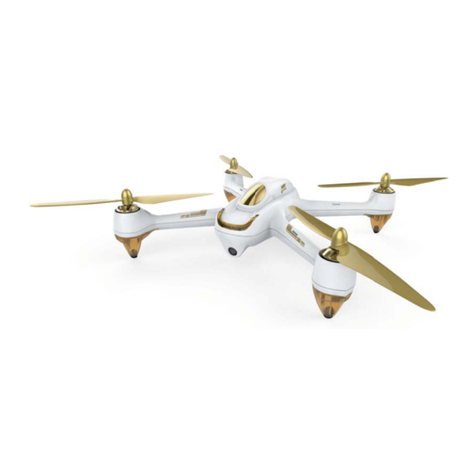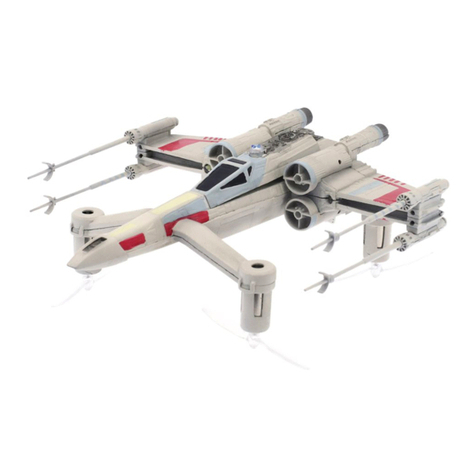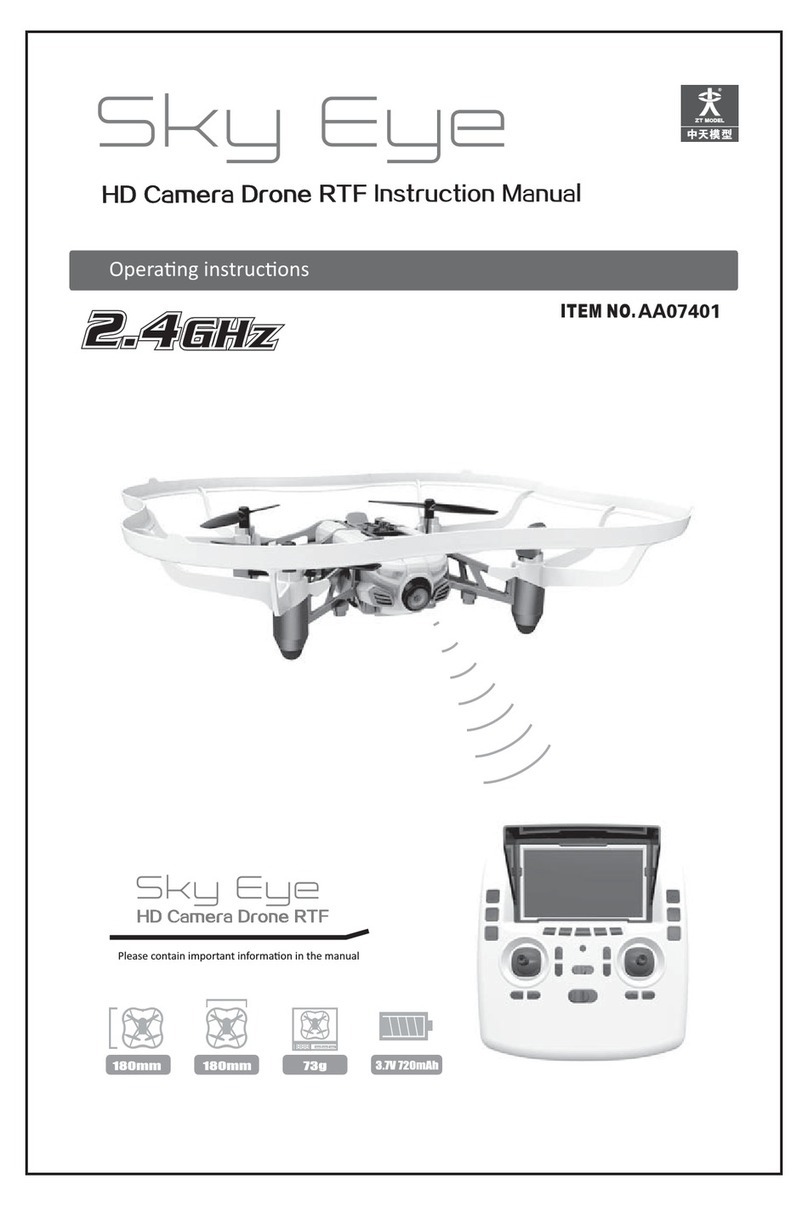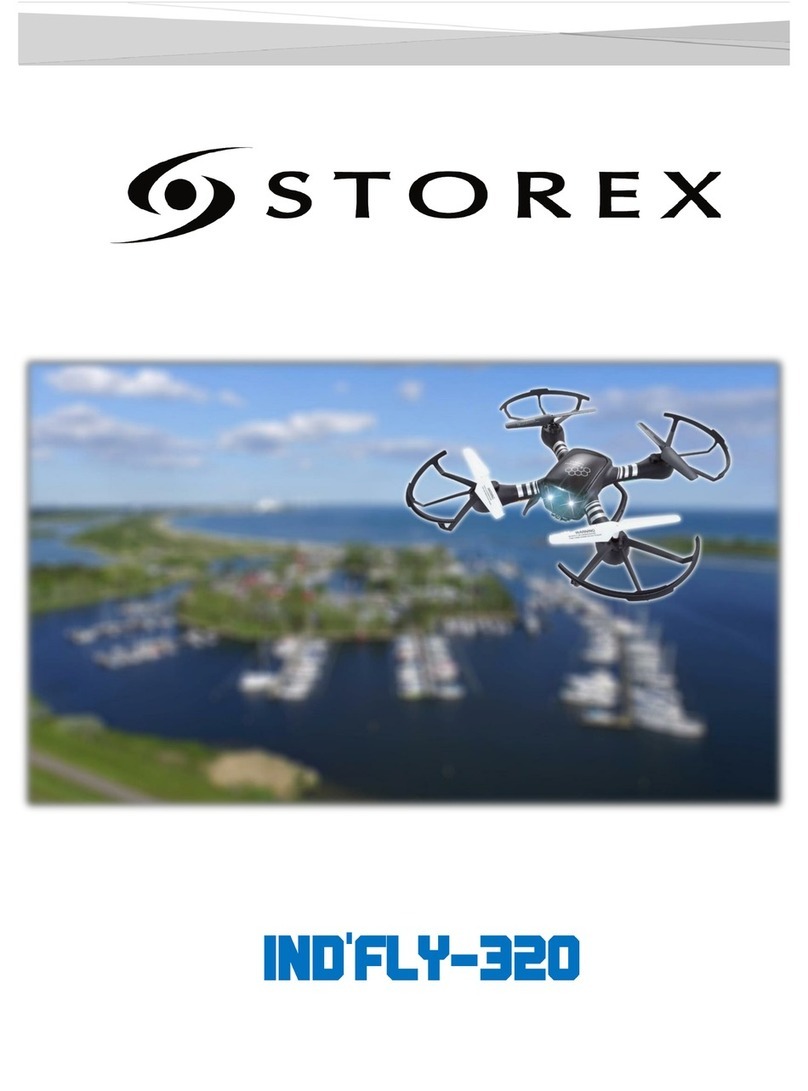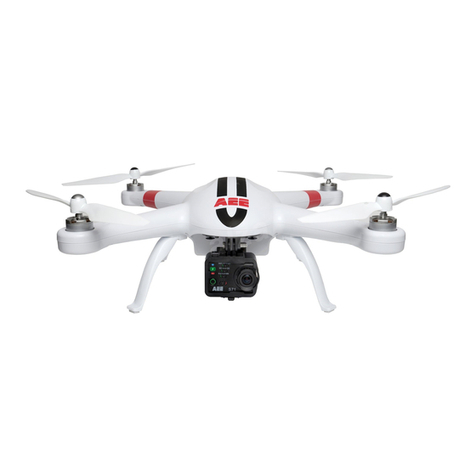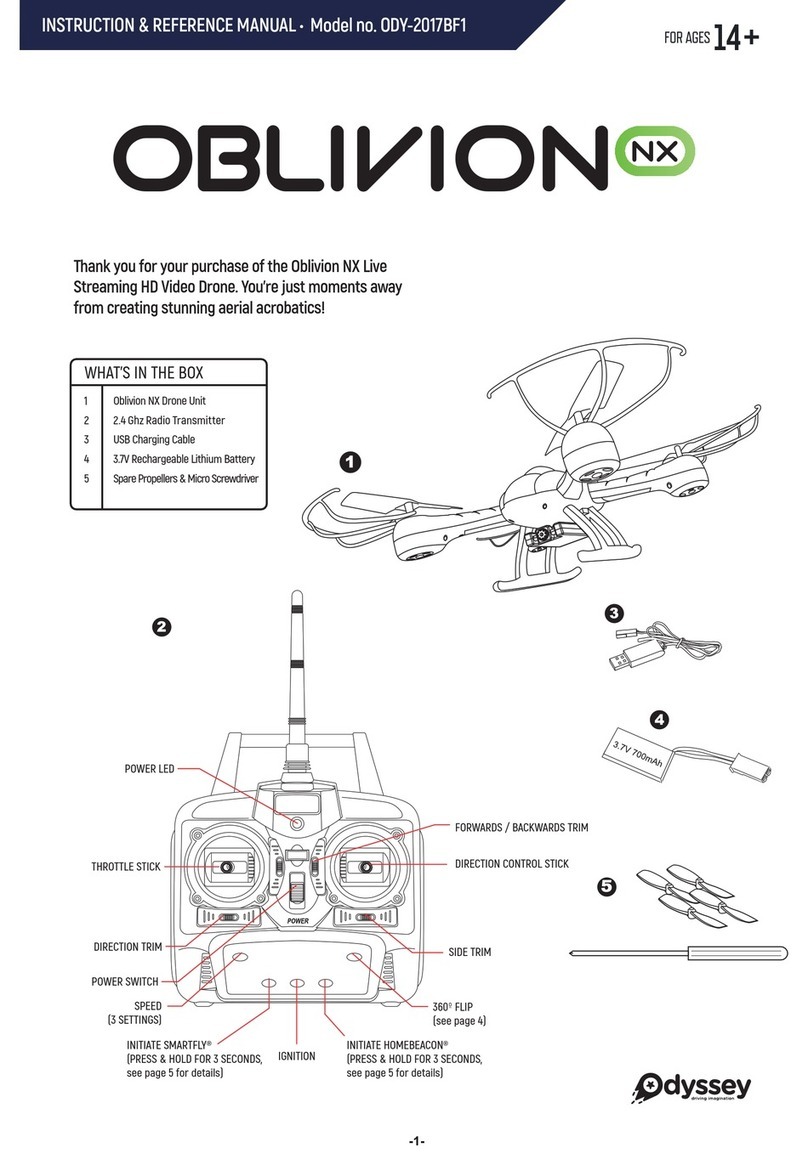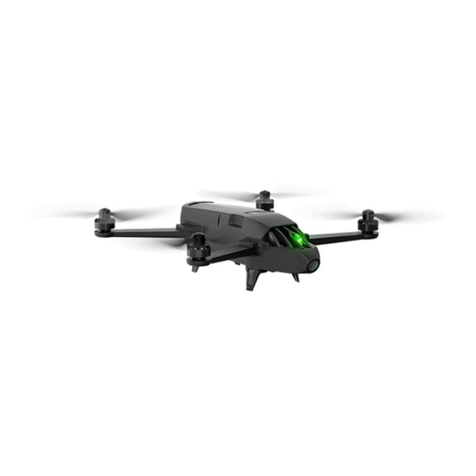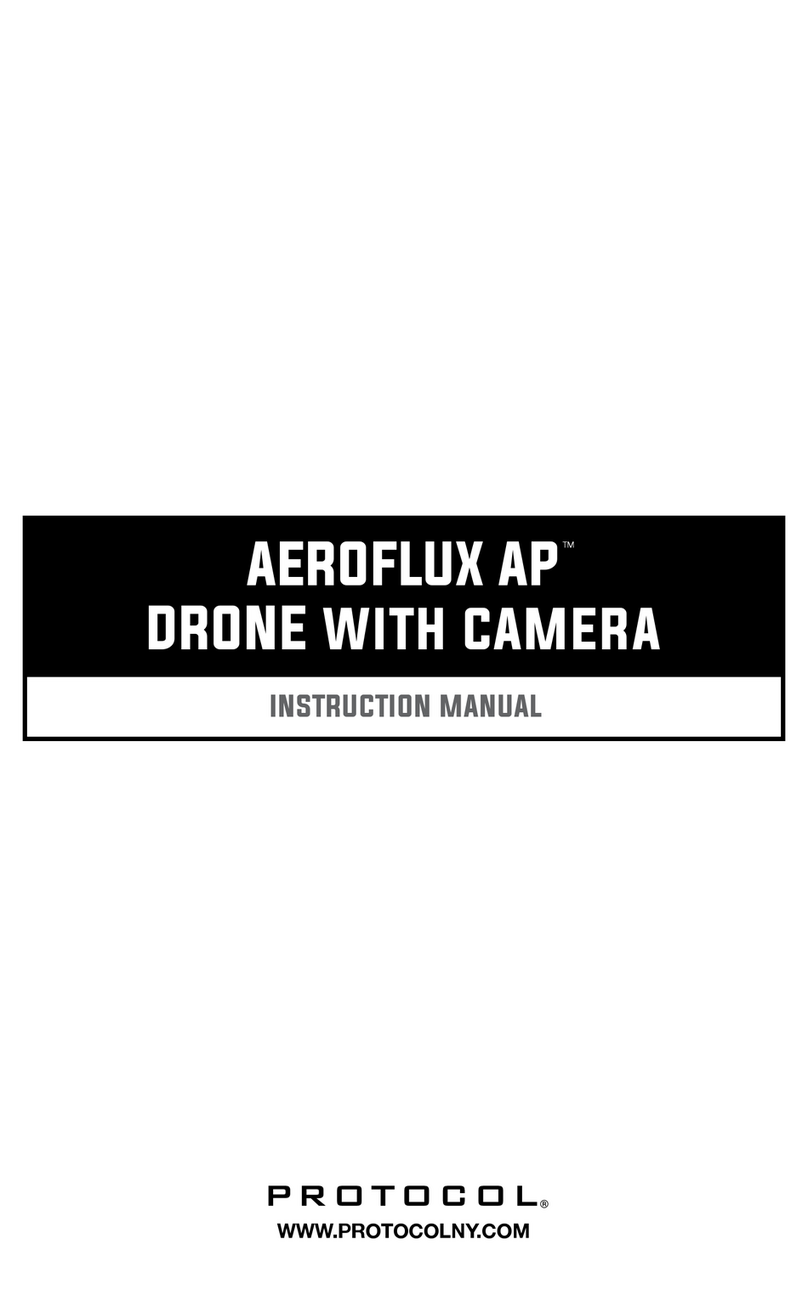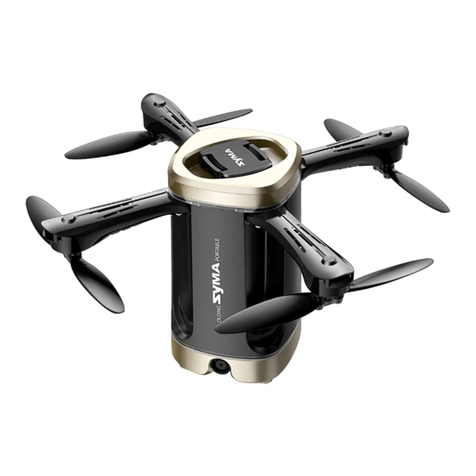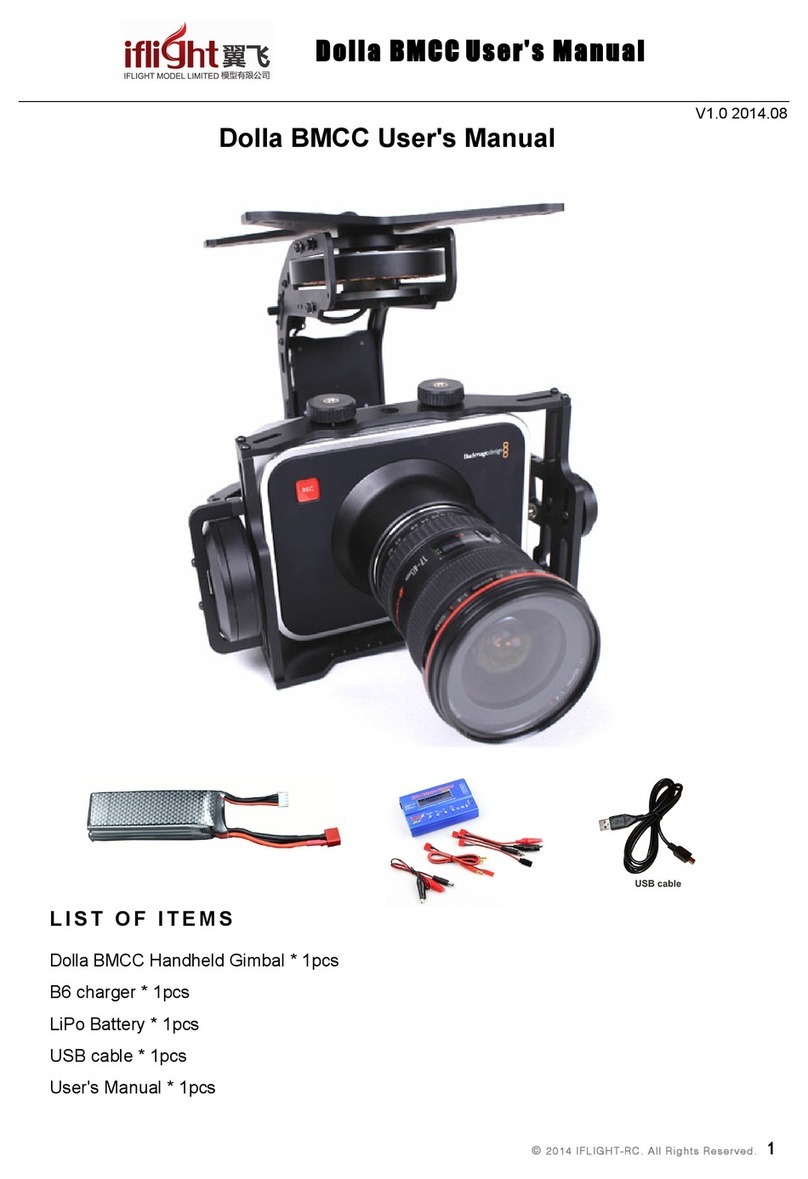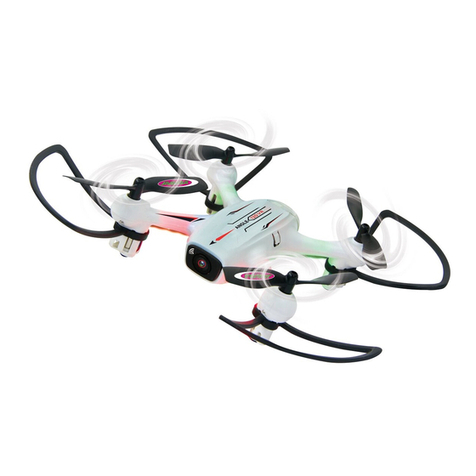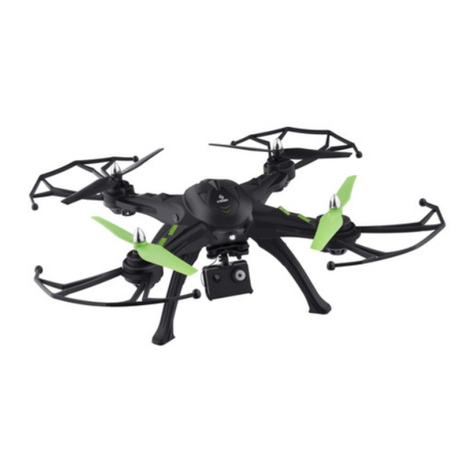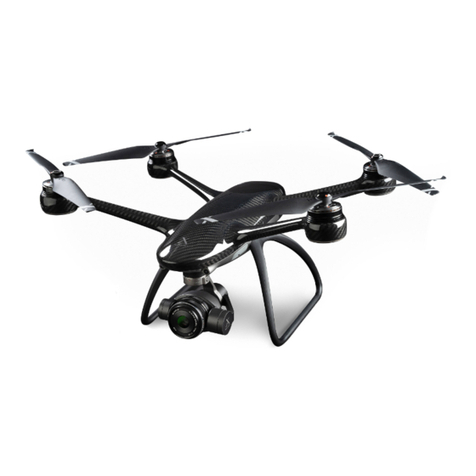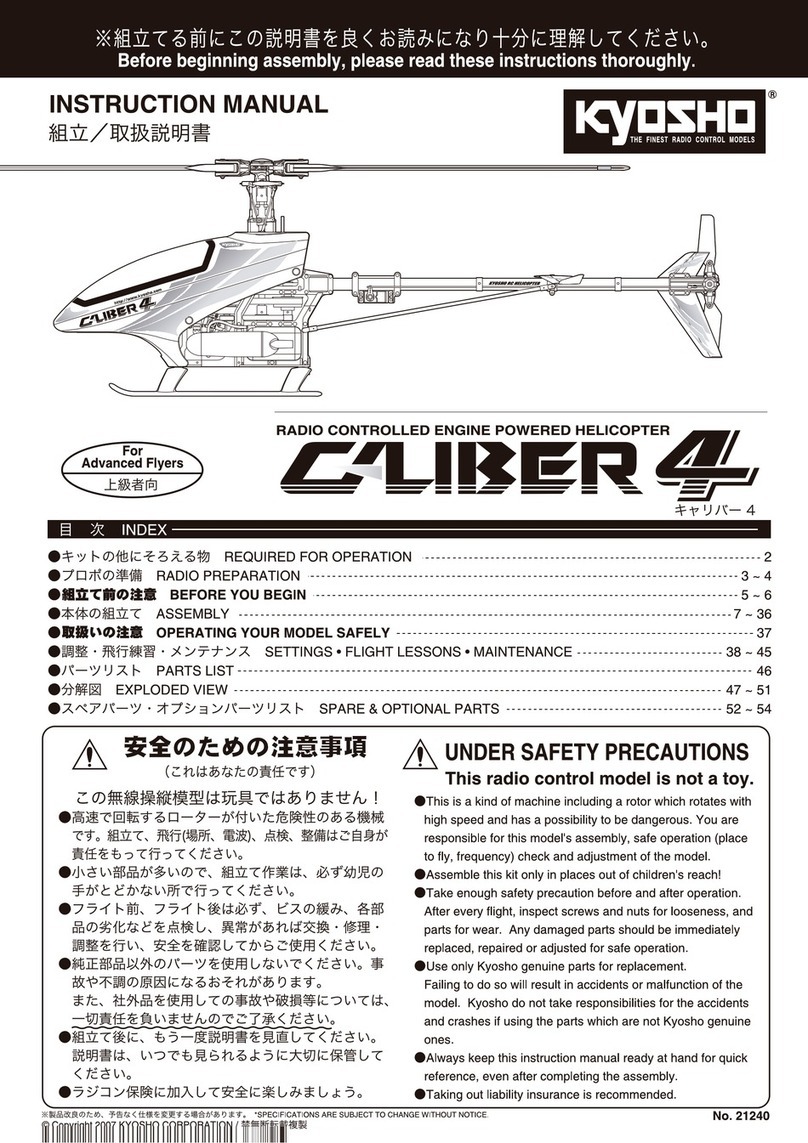WATTS INNOVATIONS PRISM R.P.A.S. Technical specifications

1
FLIGHT MANUAL
R.P.A.S.
All rights reserved. No part of this manual may be reproduced or copied in any form or by any means without written
permission of Watts Innovations LLC

PRISM FLIGHT MANUAL
2
R.P.A.S. FLIGHT MANUAL
DECEMBER 2020
Category of Airworthiness:
Applicable Airworthiness Requirements:
Serial Number:
Registration:
Doc. No. :
Date of Issue:
This manual must be carried with the RPAS at all times.
Scope and revision status can be found in the Record of Revisions.
This RPAS is to be operated in compliance with the information and limitations contained herein.

PRISM FLIGHT MANUAL
3
INTENTIONALLY LEFT
BLANK

PRISM FLIGHT MANUAL
4
TABLE OF CONTENTS
CHAPTER
GENERAL…………………………………………………..……………………………. 1
OPERATING LIMITATIONS………………………………………………………….... 2
EMERGENCY PROCEDURES……………………………..………………………….. 3
NORMAL OPERATING PROCEDURES……………….…………………………..... 4
PERFORMANCE………..……………………………………………………………..... 5
WEIGHT AND BALANCE…...…………….…………………………………………... 6
RPAS DESCRIPTION…………..……………………………………………………….. 7
BATTERIES AND CHARGING…………………………...………………………….... 8
RPAS HANDLING AND SETUP.............................…………………..……………... 9
RPAS MAINTENANCE AND REPAIRS………………….………………………......10

PRISM FLIGHT MANUAL
5
INTENTIONALLY LEFT
BLANK

PRISM FLIGHT MANUAL
6
RECORD OF REVISIONS
REVISION No.
1PAGES 16, 113 2/5/21
EFFECTIVE DATEREVISION

PRISM FLIGHT MANUAL
7
INTENTIONALLY LEFT
BLANK

PRISM FLIGHT MANUAL
8
Thank you for purchasing PRISM, an industrial drone by Watts Innovations, LLC.
This manual is intended to satisfy FAA and Transport Canada requirements for an Unmanned
Aircraft Flight Manual as a critical part of application for advanced operations or operations below
55lbs MTOW.
NOTE:
Draws the attention to any special item not directly related to safety but is important or unusual.
CAUTION:
Disregarding the following instructions leads to serious or long term deterioration of flight safety.
CHAPTER 1: GENERAL
1.1 INTRODUCTION
1.2 WARNINGS AND NOTES
WARNING:
Disregarding the following instructions leads to an immediate or severe deterioration of flight
safety and hazardous situations, including such resulting in personal injury or damage to property.

PRISM FLIGHT MANUAL
9
PRISM is a rotorcraft that may fly as either a Quadcopter or Coaxial X8 with four or eight motors
arranged in either configuration, capable of operating in a wide range of conditions for a wide range of
applications.
Each motor is mounted on the end of a carbon-fiber arm at equal intervals around a flight deck using
aviation-grade aluminum fastenings. The central flight deck contains the avionics between two
protective carbon-fiber plates, with side-mounted data and power ports to allow sensor and battery
payload integration on the top or bottom of the airframe using the integrated 12mm rail system,
according to the user’s needs.
Motor to motor diameter 1100 mm
Maximum Diameter (Propeller tip to tip) 1817 mm
Height 500 mm
Dry Weight 15.6 lbs (7.08 Kg) (Quadcopter)
20.3 lbs (9.21 kg) (Coaxial X8)
MTOW 37 lbs (16.78 Kg) (Quadcopter)
59.9 lbs (34.1 kg) (Coaxial X8)
1.3 RPA GENERAL INFORMATION
1.3.1 RPA DIMENSIONS AND MASS
RPA TYPE Rotary-Wing (Multirotor)
RPA STRUCTURE Quadcopter
Coaxial X8
RPA COMPOSITION Carbon Fiber Tube
Carbon Fiber Sheet
Aviation-grade Aluminum
Nylon PA12 Plastic

PRISM FLIGHT MANUAL
10
1.3.2 RPA DRAWINGS
Figure 1: PRISM Top View
This figure depicts PRISM in the Coaxial X8 configuration. For
three-axis views of PRISM in Quadcopter configuration, please
see Supplement 1 at the end of this document.

PRISM FLIGHT MANUAL
11
Figure 2a & 3a: PRISM Coaxail X8 Front View & Side View
Figure 2b & 3b: PRISM Quad Front View & Side View
Figure 2c & 3c: PRISM Folded Front View & Top View

PRISM FLIGHT MANUAL
12
1. PRISM central airframe (houses the flight
controller and C2 Link)
2. Front-facing wide-angle integrated High Definition
FPV camera
3. T-motor U8ii motor (x2 for Coaxial)
4. Collapsible GPS antennas
5. Detaching T-bar landing gear
6. Aircraft power supply input ports
7. Watts Innovations smart propulsion system
attachment assembly and folding pivot
8. Locking hook to anchor boom when folded
9. Communications link antennas
10. Watts Innovations battery trays for 2x 12s or 4x
6S 10,000-16,000 mAh lithium-polymer batteries
11. 12mm rail payload mounting system
12. Spring-loaded release knob for folding propulsion
boom
Table 1: COMPONENT LIST
PRISM was created to be propulsion-system agnostic, meaning it can fly as either a
quadcopter or coaxial x8, with any motor/ESC/propeller. Each propulsion system arm is
user-changeable by removing only two screws. This allows users to change the propulsion
configuration according to their needs. This gives users the freedom to change between
a quadcopter or a coaxial x8, or replace one individual propulsion system in the event that
one is damaged.
Watts Innovations intends to offer various propulsion systems for PRISM. The current
offered propulsion systems are as follows:
• TMotor U8ii in a Quadcopter Configuration with folding FA28” Propellers
• TMotor U8ii in a Coaxial X8 Configuration with folding FA28” Propellers
Each propulsion system consists of a motor, propeller, ESC, carbon fiber tube, and mating
bracket. Each propulsion system is hard-coded to work in only one socket location: Front
Right, Front Left, Back Right or Back Left. Only the Front Right propulsion system can be
inserted into the front right socket, and only the back left to the back left, etc. The user can
verify that the propulsion system is inserted in the correct socket by going to PRISM menu
page in the WattsQGC (See Chapter 7, section 7.11.2, subsection II).
PRISM’s features a patent pending technology which is called Propulsion ID. Propulsion ID
allows the user to insert any type of propulsion system that Watts Innovations produces
into the aircraft, at which time the drone will automatically understand which propulsion
system is connected, and then automatically load in the parameters that are necessary for
flight for that particular propulsion system. In layman’s terms, this allows a user
1.3.3 PROPULSION SYSTEM

PRISM FLIGHT MANUAL
13
PRISM uses the Pixhawk 2.1 CUBE Orange flight controller. This autopilot
system is manufactured in Taiwan, and is used by thousands of RPAS around the world.
This system runs the open source ARDUCOPTER Firmware, with widespread providing a
proven reliability record. The flight controller employs built-in redundancy, using 3 onboard
IMUs and 2 processors, limiting single point of failure of the autopilot or
navigation functionality.
PRISM also utilizes dual HERE3 Compass/GPS systems which offer precise GPS
location as well as an external magnetometer for direction and navigation.
In addition, PRISM utilizes a Raspberry Pi Zero-W as an onboard companion
computer. This onboard computer allows PRISM to connect to a WiFi network
for software updates, as well as system level configuration and control.
This RPA is delivered with the EchoSky Mobile radio system running the proprietary
WattsQGC application for flight.This link provides all required communications over a
single, bi-directional, radio signal. The system comprises an air module and ground control
station, and operates on the 2.4 GHz spectrum. The EchoSky Mobile system incorporates
RC control, Mavlink telemetry and HD Video streaming into one compact system
This will be explored in greater detail in the following sections.
1.3.4 FLIGHT CONTROL, NAVIGATION SYSTEM, AND ONBOARD COMPUTER
1.3.5 COMMUNICATION SYSTEMS
to change from a small quadcopter to a large coaxial drone in moments, with absolutely
zero setup required. This also allows a user to easily service the drone himself, in the
unlikely event that the drone requires a repair to one of its propulsion systems. Not only
that, but this technology allows the drone to display the cumulative flight time for each
individual propulsion system. Lastly, because each propulsion system’s location (Front
Right, Front Left, etc.) is hard-coded into the arm itself, the drone will recognize this,
only allowing the user to arm if all four propulsion systems are identical and plugged into
the correct arm socket.
This device is FCC and CE certified, please see Supplement 4 for
FCC and CE declarations.

PRISM FLIGHT MANUAL
14
The Remote Pilot Station acts as the interface between the PIC and the RPA. The RPS is
considered part of the RPAS, and must therefore be treated with the same level of care
and consideration as the aircraft itself.
Aircraft serial numbers are located on the outside of the front left arm socket. Each serial
number is a randomly generated 7 digit number.
For those who are interested in using 4x 6s LiPo packs, the optional 6s to 12s Power
Plates must be used. This will put two 6s batteries in series to create 12s.
WARNING:
Using battery-mounting solutions besides the one provided by Watts Innovations may result in the
battery payload becoming unstable or detaching, and causing damage to the batteries, payload,
airframe, propellers, and/or persons on the ground.
1.4 REMOTE PILOT STATION
1.3.7 SERIAL NUMBERS
Power for flight is best supplied by two Lithium Ion Polymer (LiPo) Battery Packs. Because
PRISM may be configured with various propulsion systems, it is extremely flexible with
regards to the capacity of the batteries used. PRISM is compatible with a range of battery
capacities between 8,000 mAh and 16,000 mAh.
PRISM has 2x AS150U Male Connectors which accept 2x AS150U Female connectors.
PRISM operates on 12s (50V). These connectors are typically used for 12s LiPo Batteries.
With that, PRISM can accept:
• 2x 12s LiPo Batteries (Ranging from 8,000mAh to 16,000mAh)
• 4x 6s LiPo Batteries (Ranging from 8,000mAh to 16,000mAh)
1.3.6 FLIGHT BATTERIES

PRISM FLIGHT MANUAL
15
This RPS operates as a stand-alone, handheld unit providing the PIC full control of all the
RPAS functions.
1.4.1 ECHOSKY MOBILE RADIO
TM
This handheld unit allows manual control
of the RPA via 2 joysticks and various
switches, illustrated in more detail in other
sections of this manual.
The RPS incorporates a touch screen
Android device, acting as an interface
between the remote pilot and the RPA.
The built in display provides a real-time
video feed from the RPA as well as
vital flight telemetry such as battery
voltage, altitude and position relative
to the pilot. The touch screen interface
also allows the pilot to change settings
on the RPA’s flight control system, as
well as plan and execute waypoint
missions.
Figure 4: ECHOSKY RPS

PRISM FLIGHT MANUAL
16
This Flight Controller provides the user a fully-customizable, feature-rich autopilot system.
The user can set up the RPA to operate in a number of flight modes, each with different
limitations. It is recommended that the user operates this RPA with the manufacturer-
defined settings, in order to limit PRISM’s maximum lateral and vertical velocities, ensuring
safe flight at all times. The performance figures stated above were derived using the stock
autopilot configuration.
NOTE:
All Parameters are given for operations at Sea Level and ISA. The pilot should expect a degradation of performance
as operating altitude and air temperature increase. This topic is covered further in CHAPTER 5: PERFORMANCE.
2.1 AIRSPEED AND FLIGHT PERFORMANCE
2.2 WEIGHT
CHAPTER 2: OPERATING LIMITATIONS
MAXIMUM TESTED LATERAL SPEED 60 mph (95 km/h, 27 m/s)
COAXIAL X8QUADCOPTER
MAXIMUM RATE OF CLIMB
DRY WEIGHT
6m/s (19.6 m/s)
15.6 lbs (7.08 kg) 20.3 lbs (9.21 kg)
MAXIMUM BANK ANGLE 45 degrees
MAXIMUM RATE OF DESCENT
WEIGHT WITH BATTERIES
4 m/s (13.1 ft/s)
See values scaled for battery weights, below
TURN RATE LIMITS (YAW) 150 degrees/second

PRISM FLIGHT MANUAL
17
PRISM’s flight endurance varies according to payload, quantity and degree of maneuvering,
and atmospheric conditions. Additionally, PRISM supports 6S lithium-polymer battery sizes
from 8,000 mAh to 16,000 mAh. Using batteries of a greater capacity will logically increase
flight endurance, but larger batteries also impact performance due to their larger mass.
In order to calculate flight time, the interactive Flight Time Calculator has been developed
which has been derived from real-world testing. This may help users choose proper battery
combinations to achieve desired flight time and operational weights. It may be found here:
Quadcopter calculator: https://wattsinnovations.com/pages/prismquadcalc
Coaxial X8 calculator: https://wattsinnovations.com/pages/prismcoaxialcalc
Figures 5 and 6 show graphs of the relationship between payload weight and hovering
time using a pack of four x 10,000 mAh batteries (weighing 13.75 lbs) at sea level and 75°F
/ 24°C ambient temperature for both the Quadcopter and Coaxial X8 configurations.
*The PRISM X8 configuration is technically capable of an MTOW of 55 lbs or more, but may not operate at an MTOW of 55 lbs or greater by law while
remaining in its weight and performance category.
2.3 ENDURANCE
Tattu 6s 8,000mAh x 4 (10.6lbs)
Tattu 6s 8,000mAh x 4 (10.6lbs)
26.2 lbs (11.88 kg)
10.8 lbs (4.89 kg)
30.9 lbs (14.02 kg)
24.0 lbs (10.88 kg)
Tattu 6s 10,000mAh x 4 (13.75lbs)
Tattu 6s 10,000mAh x 4 (13.75lbs)
29.4 lbs (11.29 kg)
7.6 lbs (3.44 kg)
34.1 lbs (15.47 kg)
20.8 lbs (9.43 kg)
39.3 lbs (17.83 kg)
15.6 lbs (7.07 kg)
41.8 lbs (18.96 kg)
13.1 lbs (5.94 kg)
MTOW 37 lbs (16.78 kg) 54.9 lbs (24.9 kg)*
Tattu PLUS 6s 16,000mAh x 4 (19 lbs)
Tattu PLUS 6s 16,000mAh x 4 (19 lbs)
Tattu PLUS 12s 16,000mAh x 2 (21.5lbs)
Tattu PLUS 12s 16,000mAh x 2 (21.5lbs)
34.6 lbs (15.69 kg)
2.4 lbs (1.08 kg)
N/A
N/A
MAXIMUM USER PAYLOAD See values scaled for battery weights, below

PRISM FLIGHT MANUAL
18
Figures 5 & 6: PRISM PAYLOAD AND FLIGHT TIME CALCULATIONS

PRISM FLIGHT MANUAL
19
Extreme temperatures will have a significant effect on the performance and safety of the
RPAS operations. These effects are further discussed in CHAPTER 5.
2.4 OPERATING TEMPERATURES
2.5 RADIO LINK RANGE
NOTE:
Operators should not discharge the batteries beyond 80% of their capacity before landing, and should not attempt
to remain in the air on batteries that have less than 20% charge. Discharge levels may be monitored on the RPS
display during flight. Table 2 shows the recommended usage levels per type of 6S battery in use.
Table 2: RETURN-TO-HOME AND LANDING LEVELS FOR VARIOUS 6S BATTERY SETS
Battery capacity (mAh)
8,000 5,600 6,400
10,000
Minimum Temperature
Control Link Range
7,000
-10° C (14° F)
3.1 miles / 5 km
8,000
16,000
Maximum Temperature
Video Link Range
11,200
+ 45° (113° F)
3.1 miles / 5km
12,800
Return-to-Home level
(mAh used) – 70%
Landing level
(mAh used) – 80%
NOTE:
The link range is affected by the RF noise floor in the area of operations. When flying in urban areas with many
sources of RF radiation such as WIFI routers or Cell towers, the user should expect significant degradation
of control link signal quality.
ECHOSKY MOBILE:

PRISM FLIGHT MANUAL
20
2.6 METEOROLOGICAL LIMITATIONS
Visual Conditions VMC for duration of operation.
Maximum Wind Speed
(measured on the ground)
Precipitation Tolerance
10 m/s (22.4 mph, 19.4 kts)
Tested to IP43 Standards
PRISM, as received from the manufacturer, should not be operated at altitudes above
3,000 meters (10,000 feet) above sea level (MSL). If High Altitude operations are required,
it is highly recommended that the operator takes great care in ensuring that the aircraft is
capable of performance at such altitudes. The operator may have to utilize a smaller/lighter
battery system in order to gain performance at high altitudes.
Safe operations require a minimum of 5m radius around the RPA to be clear during take-off
and landing. The cleared area should be as large as practicable to maximize the safety of
the operation.
2.7 OPERATING TEMPERATURES
2.8 TAKE OFF / LANDING AREA
CAUTION:
PRISM is not built for operation in precipitation beyond a light rain or in intensely-dusty conditions.
CAUTION:
The pilot must be aware that 10 m/s wind speed as measured on the ground will result in
significantly higher wind speeds as flight altitude is increased. The pilot must be aware of wind
gradient and limitations of RPA in respect of maximum forward speed and safe operation.
Table of contents
Other WATTS INNOVATIONS Drone manuals

